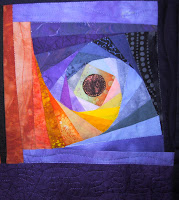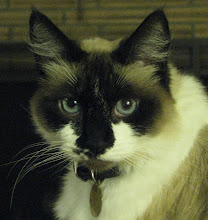 I have accomplished a lot on the domestic front, including hiring a gardener/landscaper to help me turn our scrabbly front lawn into a thing of beauty, and contacting an accountant to get our taxes done (Thanks to Libbi for both referrals). The ever-practical Jer pointed out that it would make sense, before spending megabucks on landscaping, to have the sewer line, which runs under the lawn, inspected. So I set up a sewer-scoping appointment; the guy came out the next day and gave our pipe a clean bill of health, yay.
I have accomplished a lot on the domestic front, including hiring a gardener/landscaper to help me turn our scrabbly front lawn into a thing of beauty, and contacting an accountant to get our taxes done (Thanks to Libbi for both referrals). The ever-practical Jer pointed out that it would make sense, before spending megabucks on landscaping, to have the sewer line, which runs under the lawn, inspected. So I set up a sewer-scoping appointment; the guy came out the next day and gave our pipe a clean bill of health, yay.See what I mean? Uneventful. There is one bit of real news: We finally have neighbors next door, a couple from San Francisco. That's kind of a big deal, since the house has been vacant since we moved here more than a year and a half ago. We're looking forward to having them over for a drink and a schmooze.
I'd also jotted myself a note to say something about the two CDs that haven't been out of my changer since I bought them, except for the few minutes it took to load them onto my iPod: John Callahan's (yes, the outrageous cartoonist) Purple Winos in the Rain, and Casey Neill's Memory Against Forgetting. I hadn't heard of Casey til he blew us away at WinterFolk with a flawless and powerful mix of protest, punk and Celtic (generally not all in the same song). Great set, great singer-songwriter. R-Bob sez check 'em both out.
This morning I heard an NPR interview with Susan Patron, who wrote The Higher Power of Lucky, a Newbery Medal-winning children's book that's set off a huge brouhaha in library-land because it uses the word "scrotum." According to the author, this isn't the first work of juvenile fiction in which the word appears. But "scrotum" is right there on page 1, and the Newbery is the kiddy-lit version of the Nobel Prize for Literature, so no wonder the issue's held sway (I can't resist) in the media, including the New York Times' semi-clueless take. I'll spare you my own further thoughts, since I'm sure the library blogosphere is abuzz with opinions more fact-based than my own.
But books and, I suppose, scrota, were on my mind as I walked up to Reed this afternoon. I was headed for New and Used, the current exhibit in the Cooley Gallery. The photographer, Marc Joseph, takes as his theme old books and records and the stores that sell them. The images are large-scale, color, evocative. Several were very compelling, as was the turntable set up in the middle of the gallery -- Nico's Chelsea Girl was playing when I walked in -- with another half dozen LPs (The Mekons, Sonic Youth, Patti Smith) on a shelf below, and a sign inviting visitors to bring in albums of their own and play them at a respectful (I think that was the word) volume. There was also a bench and a browsing copy of the much-more-than-an-exhibit-catalog, full of essays about old books and bookstores and record-collecting, that sucked me in immediately. I meandered over to the campus bookstore to buy a copy. "How's it going?" asked the clerk. "Very self-indulgently," I replied, as I handed over $45. I'm sure the call to publish in hardcover was a medium-as-message decision on the artist's part; the book as artifact, and all that. Good for him.

As I left the bookstore, headed for home, a glint in an archway caught my eye; another Reedie art project. Ten or so metallic silver-blue objects, ranging from in-your-dreams life-sized to the dimensions of a 30-gallon Hefty bag, all hanging in the breeze, gently swaying. Male-italia. Ball sacks. Scrota. Sometimes life is just too congruent for words.





















